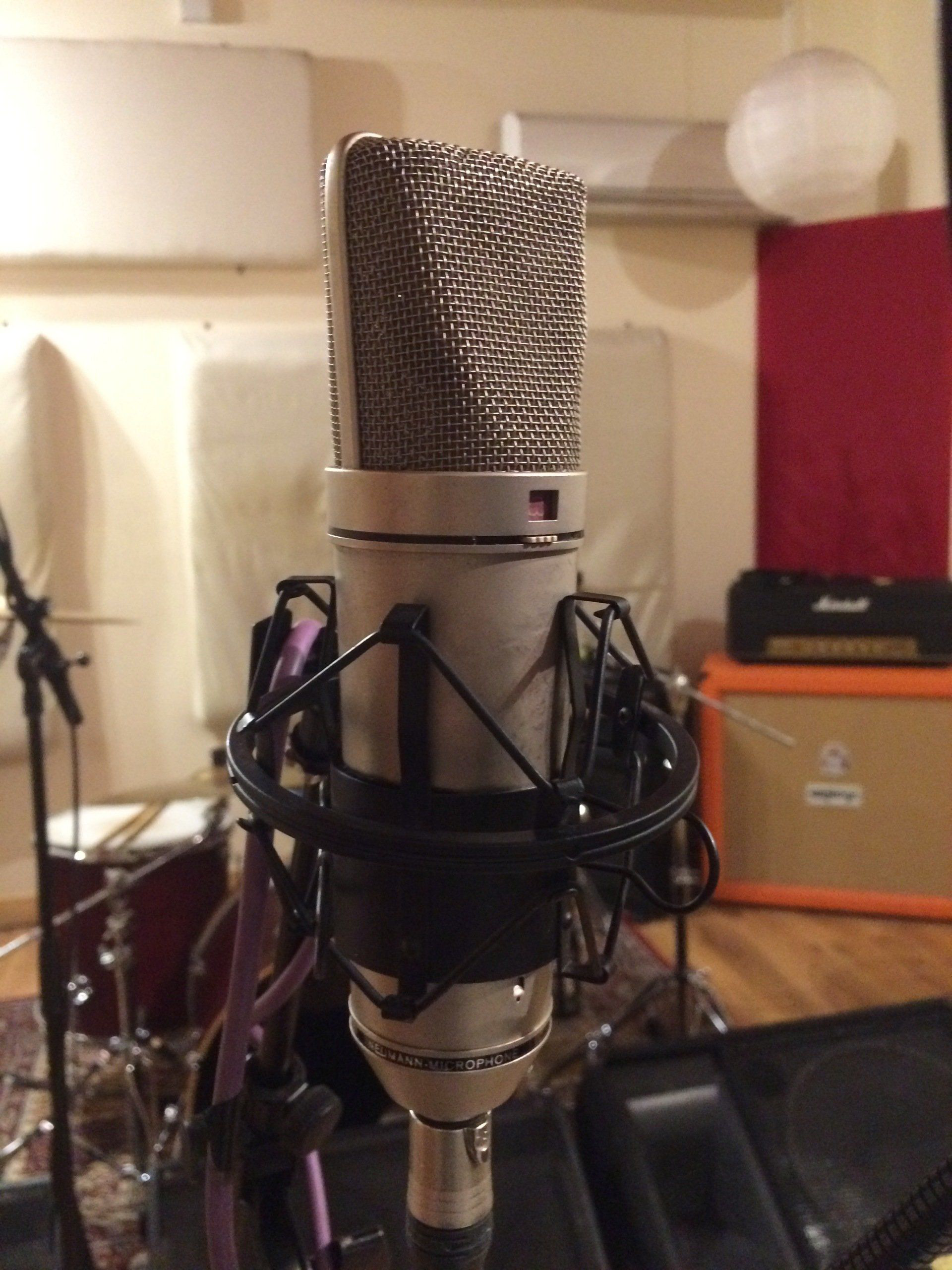Magic Mic...
... it'll make you feel like a Neumann.
Any top recording facility anywhere in the world will have at least one Neumann U87 microphone. It is that important a tool for busy studios, and has been since the early '70s. It is, as they amusingly remark on the Funky Junk website, quite probably every studio engineer and record producer’s second favourite vocal mic. Some people when asked for their vote are likely to try and sound cool by mentioning something rare and esoteric. Others will want to impress with their knowledge of (and implied experience with) something unique and expensive. Throw out a poll for “best vocal mic ever” on Facebook and see just how long the debate rages. How many people will weigh in on either side of the great 4038 BBC v RCA 77B radio ribbon rumble? See the U47 versus FET 47 skirmish turn into all-out civil war and drag on through years of attrition, with battles fought over Siemens badged models vs. Telefunkens and guerilla actions by the U48 underground. And marvel at how many people claim their budget condenser is just as good as an AKG C12. The valve argument will always drift back to U67s and there'll always be someone who tries to get us to consider Royers next to vintage ribbons. But if you were to tell any of the budding Spectors who come through your doors that unfortunately you don’t have their favourite rare mic — but you do have a U87 — well they're sure to relax, knowing exactly what it will deliver. You might not have a Coles 4038 to call on (we’ve actually got a pair of them at New Cut Studios) or a U47 with NOS VF14 valve, but you can always rely on a U87 to just sound effortlessly great. And there are good reasons why for many folks a U87 will be their first choice for vocals every time.
Since it made it's debut in the late '60s it has been the large diaphragm condenser mic of choice for hundreds of different instruments on tens of thousands of great recordings. But to many people the U87 simply is the sound of 1970s vocal recordings. And that's because it was hands-down the single most used vocal mic of that era — in popular music anyway. This was largely down to the fact that a U87 would give you exceptional consistency from session to session: unlike many old valve mics which can change their level and character, even over the course of a single day. And I reckon that as the recording periods for albums got longer and longer, and it became standard practice to comp from multiple takes (particularly for lead vocals), that consistency was increasingly valued by engineers and producers.

In 1967 Neumann produced the U87 as a modern update of the U67 for the transistor age and as an improvement on their recent, transformer-less U77. The capsule was almost identical to the earlier K67, with a FET circuit replacing the U67’s onboard valve, a transformer coupled output and three switchable polar pick up patterns. All of these features making it superbly versatile
— as well as incredibly reliable. And if you put a U87 through a great mic preamp, while some folk might miss a little high end shimmer, it will come very close to a U67.
It is off-axis sound where a quality mic really outshines a budget mic. This is possibly the most telling comparison you can make when trying cheap mics against expensive ones. Space three U87s, set to omni and centred on the conductor, across the front of an orchestra to emulate the Mercury Living Presence technique that Bob and Wilma Fine developed (using 3 Schoeps M201s). You’ll be surprised by the results. It makes the U87 the perfect mic to record close harmony BVs in a group.
© Mark Vickers, 20/9/2018.
From the Funky Junk website:
“These 1970s mics (U87P48) can be distinguished from later models because they contain a battery compartment in the body… incorporated a discrete FET amplifier and a minimum of electronics, resulting in a smooth, upfront sound typical of the vocals heard on many 1970s cuts. Plenty of modern mics claim to emulate this sound but none come anywhere close (don’t believe the hype, brothers and sisters – modern knock-offs of classic mics are just that… pale imitations)… The old adage of ‘the original is the best’ is certainly true in this case. There’s a quality to first generation Neumann U87s that sounds effortless, reliable and extremely musical. Neumann changed the electronic design in the late 1970s/early 1980s, doing away with the battery compartment and making minor circuit changes. The result was a marginally quieter mic lacking a little of the warmth of the original. Results are everything, and the classic U87 delivers the highest quality of sound with a minimum of effort and tweaking. The most recent generation, the U87ai, has taken the mic a further step towards economy with an op-amp incorporating four (surface mounted) transistors replacing the FET. These, the current generation, retain the basic characteristics of the large-diaphragm U87 but many regard them as ‘edgier’ and a touch more brittle.”

